Hotkeys
Metamorphe: Augmenting Hotkey Usage with Actuated Keys (CHI'13)
Hotkeys are an efficient method of selecting commands on a keyboard. However, these shortcuts are often underused by users. We present Metamorphe, a novel keyboard with keys that can be individually raised and lowered to promote hotkeys usage. Métamorphe augments the output of traditional keyboards with haptic and visual feedback, and offers a novel design space for user input on raised keys (e.g., gestures such as squeezing or pushing the sides of a key). We detail the implementation of Metamorphe and discuss design factors. We also report two user studies. The first is a user-defined interface study that shows that the new input vocabulary is usable and useful, and provides insights into the mental models that users associate with raised keys. The second user study shows improved eyes-free selection performance for raised keys as well as the surrounding unraised keys.
 |
| a) The Metamorphe keyboard raises a subset of hotkeys when users press the CTRL key (image from S. Malacria). b) Each key can be individually raised with an embedded solenoid, and contains force sensors that allow a variety of novel gestures to be performed on the key. c d e) For example, the âFâ key can be pushed down to select âFindâ, or pushed left or right to select variations of that command. |
| Top: The physical manipulations that can be detected on each key. Bottom: Metamorphe prototype. | 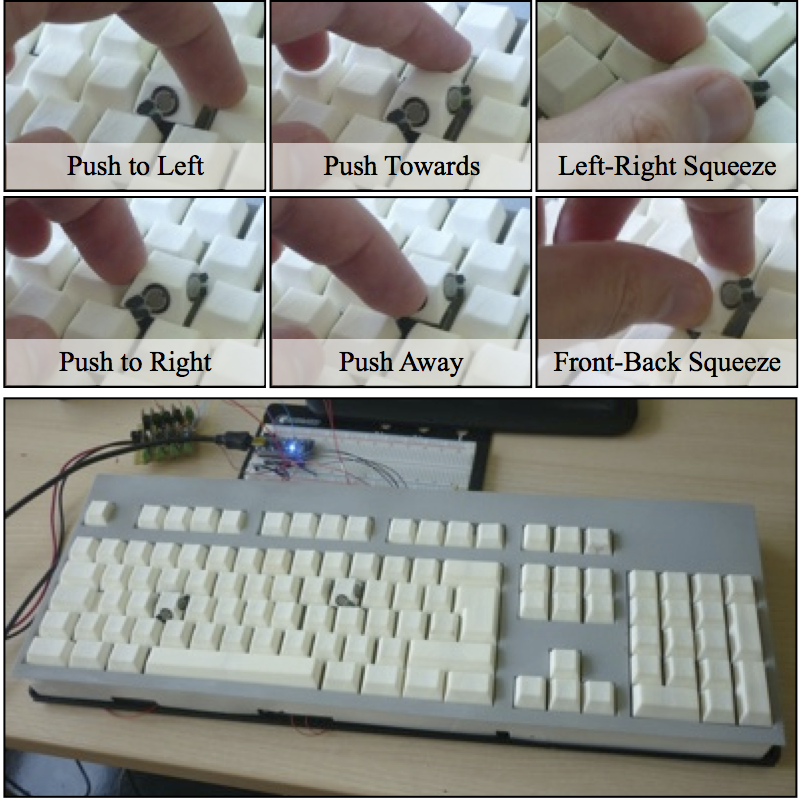 |
| Design space of raised key gestures | 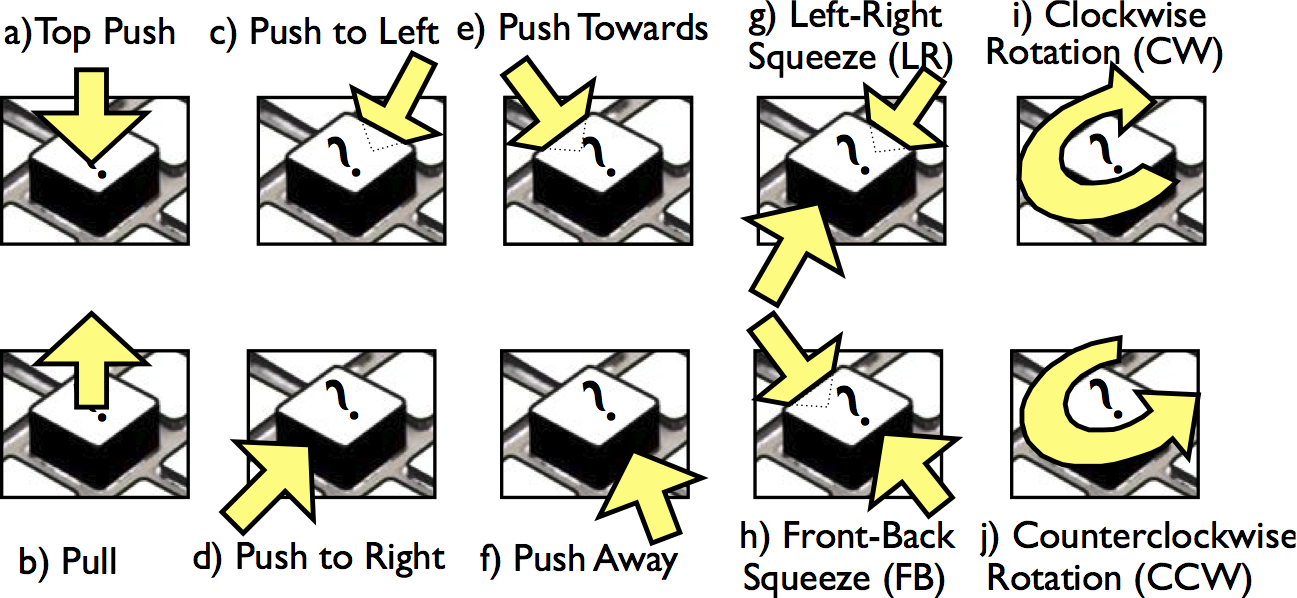 |
| Heat map of selection speed (in s) for each target keys. The two raised keys are outlined. Insets show speeds for Top Push and the directional pushes on the raised keys. | 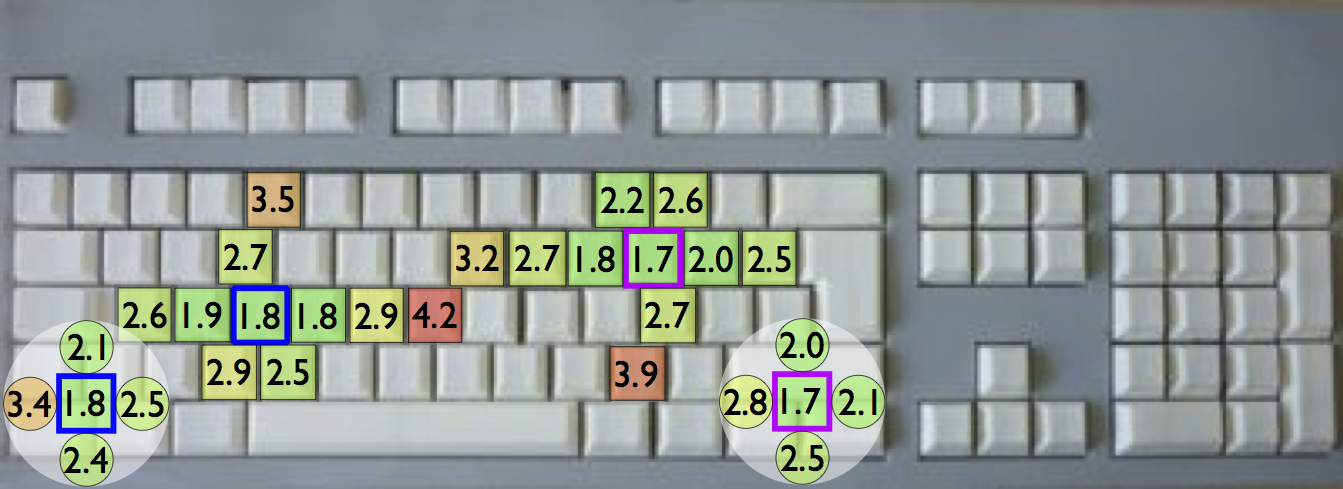 |
 |
| The most common hotkeys (using the key + gesture and tuple methods) for all 42 commands. Hotkeys in bold are our user-defined set. A blank entry in the tuple column indicates that this hotkey was the same as the key + gesture hotkey |
Promoting Hotkey Use through Rehearsal with ExposeHK (CHI'13)
Keyboard shortcuts allow fast interaction, but they are known to be infrequently used, with most users relying heavily on traditional pointer-based selection for most commands. We describe the goals, design, and evaluation of ExposeHK, a new interface mechanism that aims to increase hotkey use. Ex- poseHKâs four key design goals are: 1) enable users to browse hotkeys; 2) allow non-expert users to issue hotkey commands as a physical rehearsal of expert performance; 3) exploit spa- tial memory to assist non-expert users in identifying hotkeys; and 4) maximise expert performance by using consistent short- cuts in a flat command hierarchy. ExposeHK supports these objectives by displaying hotkeys overlaid on their associated commands when a modifier key is pressed. We evaluated Ex- poseHK in three empirical studies using toolbars, menus, and a tabbed âribbonâ toolbar. Results show that participants used more hotkeys, and used them more often, with ExposeHK than with other techniques; they were faster with ExposeHK than with either pointing or other hotkey methods; and they strongly preferred ExposeHK. Our research shows that ExposeHK can substantially improve the userâs transition from a âbeginner modeâ of interaction to a higher level of expertise.
 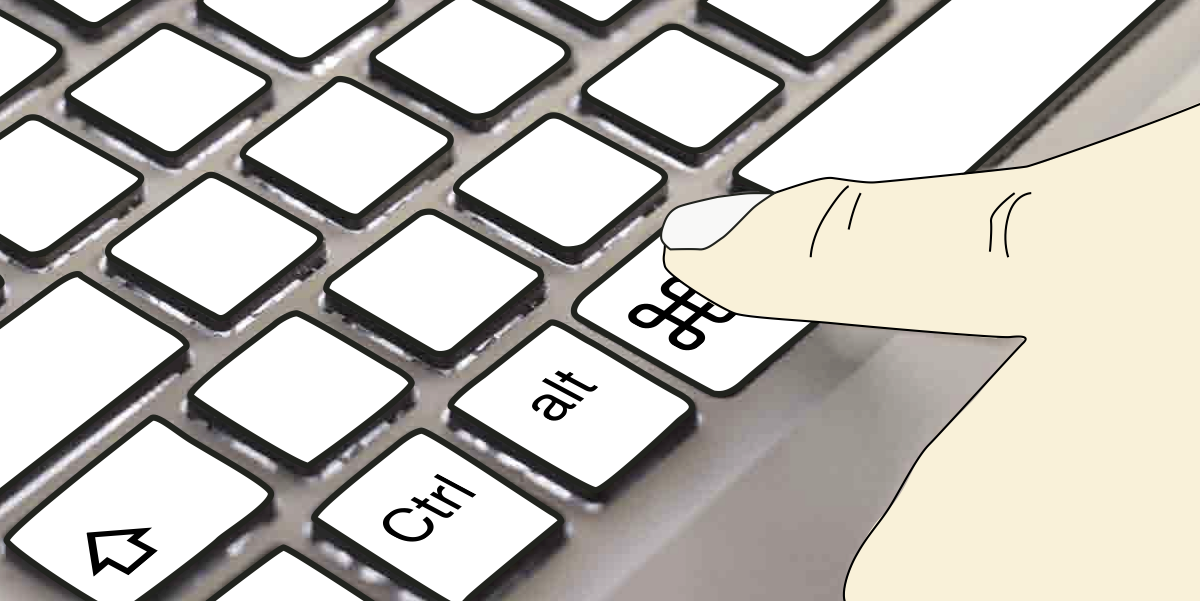  |
| The user wants to open a new tab but is not sure of the hotkey. He visually locates the button in the toolbar (boxed on left), then presses the Command key (Ctrl) to activate ExposeHK, which overlays toolbar items with available hotkeys (right). He completes the command by pressing Ctrl T |
| Intended learning curve for ExposeHK, compared with modal- ity switching (adapted from [31]). | 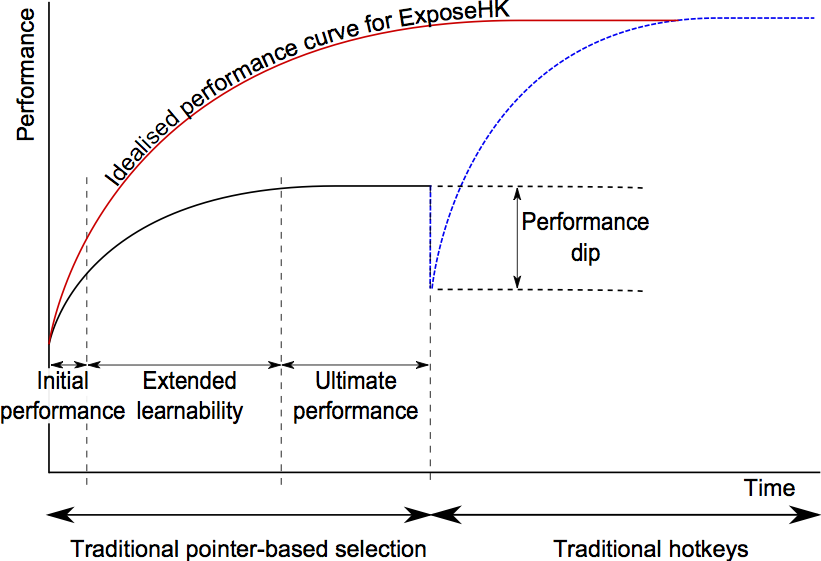 |
| Study 1 (Toolbar): % hotkey use by block. | 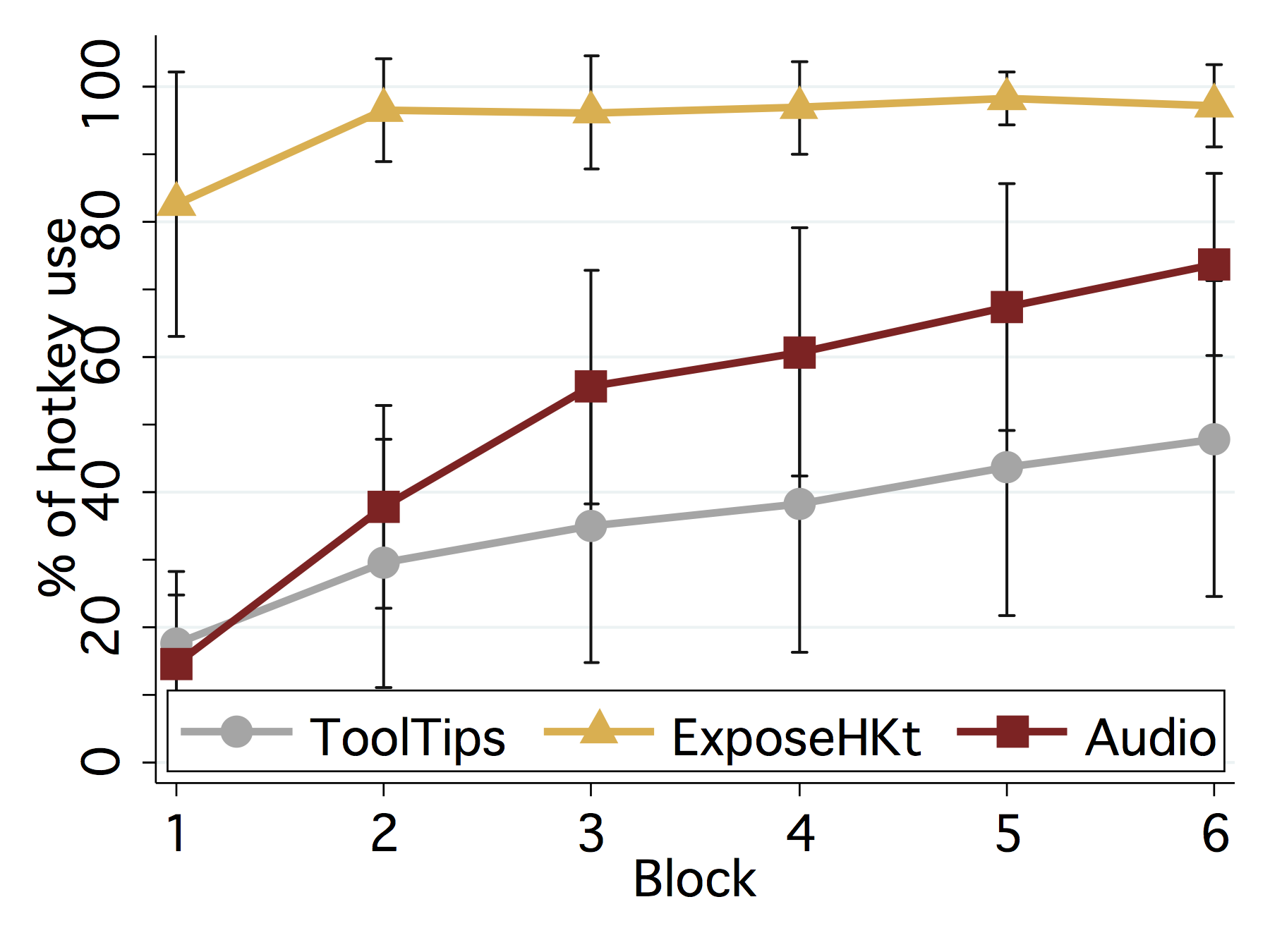 |
| Study 1 (Toolbar): % hotkey use by frequency | 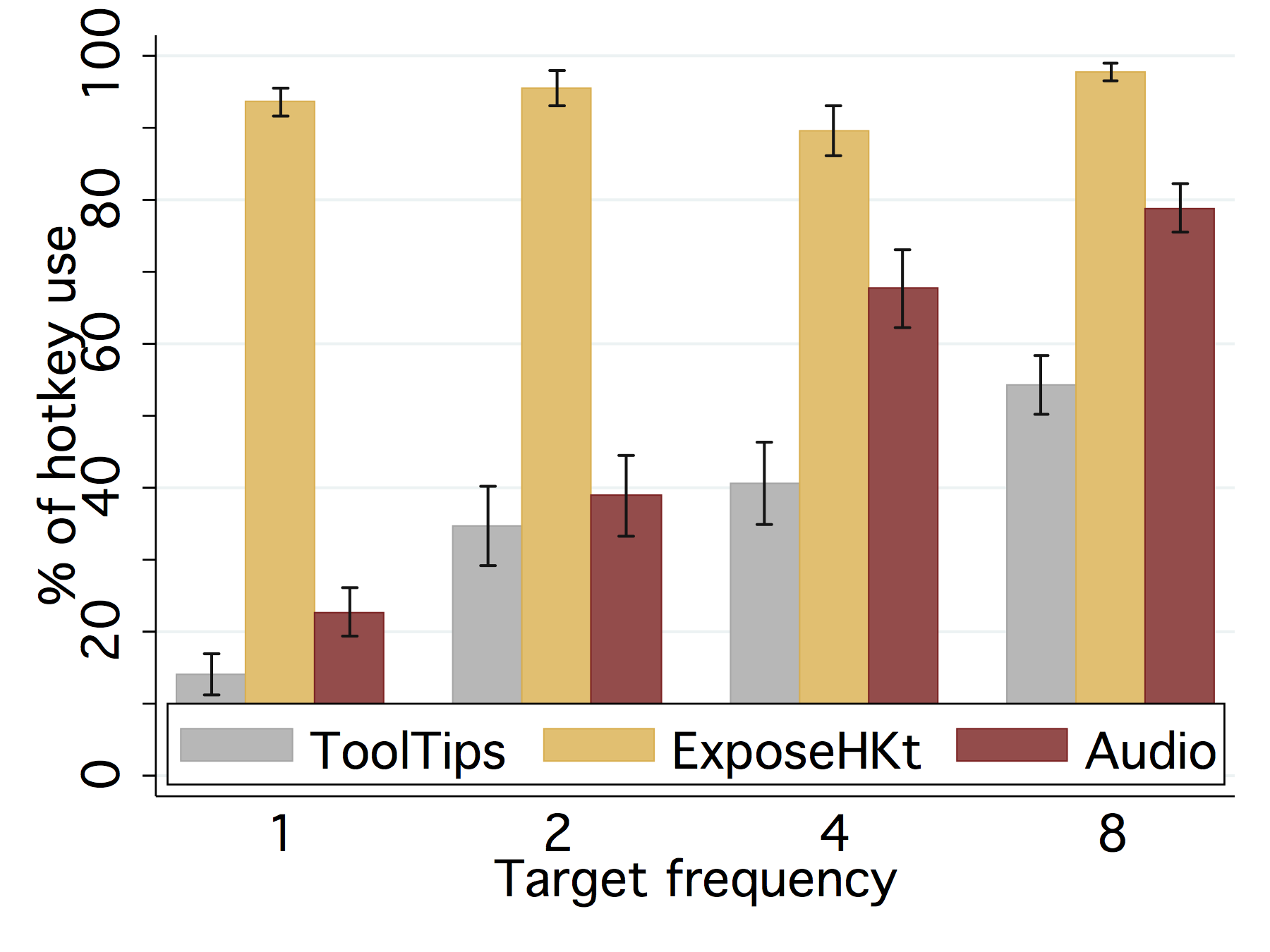 |
| Study 1 (Toolbar): mean time by block. | 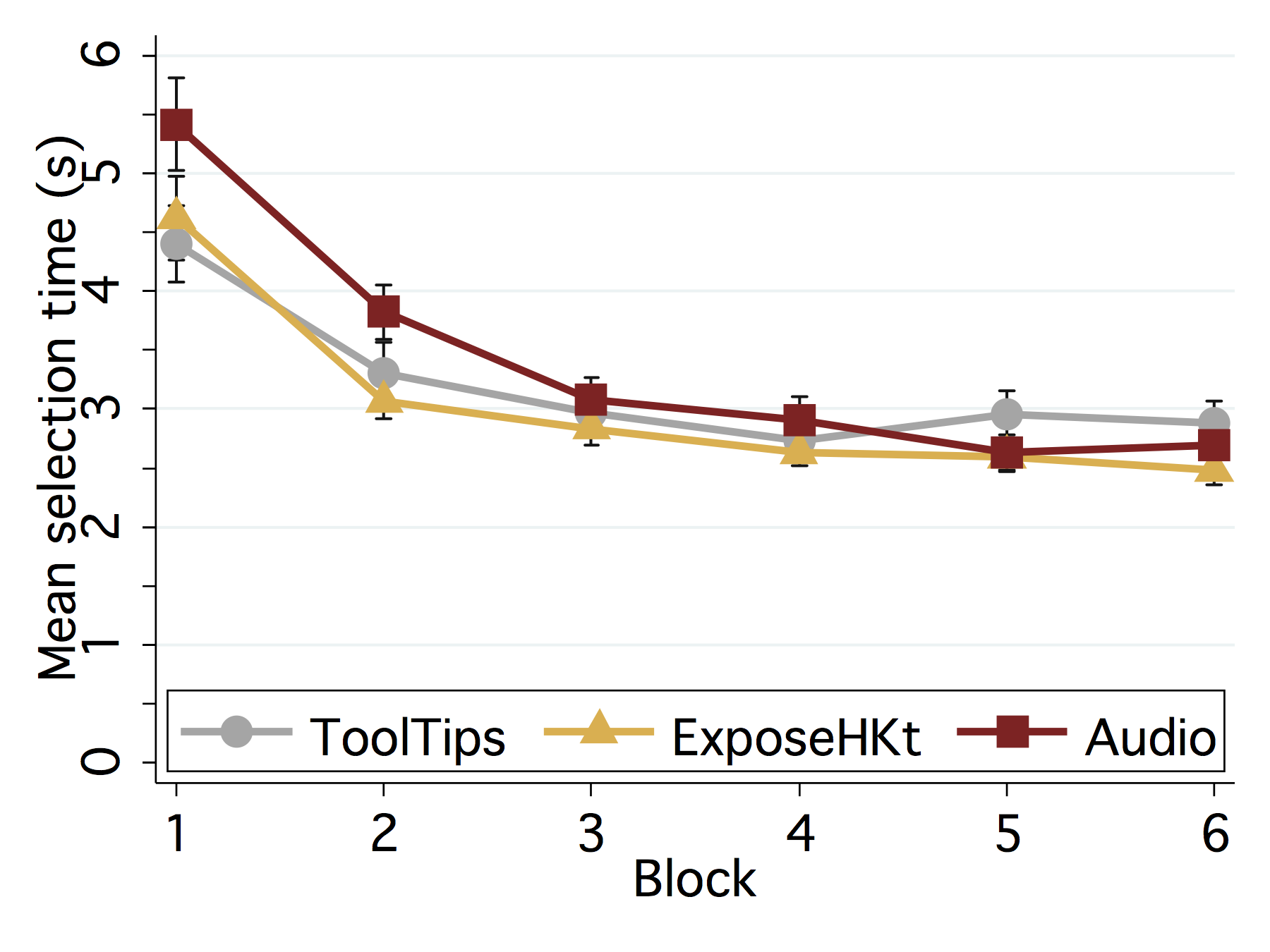 |
| The Safari menu would overlap with File, Edit, View and History menus. | 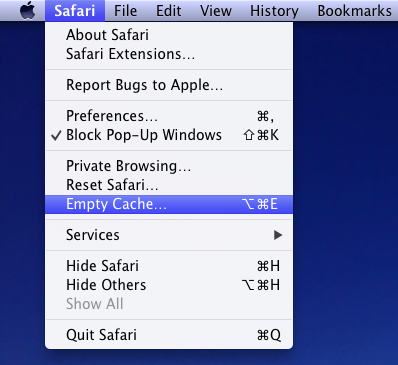 |
| Heat map of Safari menus overlapping (red/dark means more overlap). | 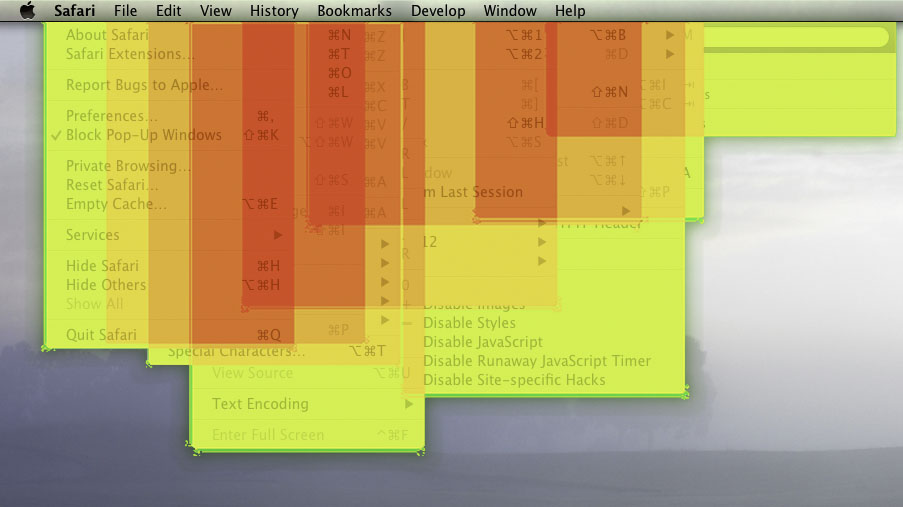 |
| Study 2 (Menus): % hotkey use by block. | 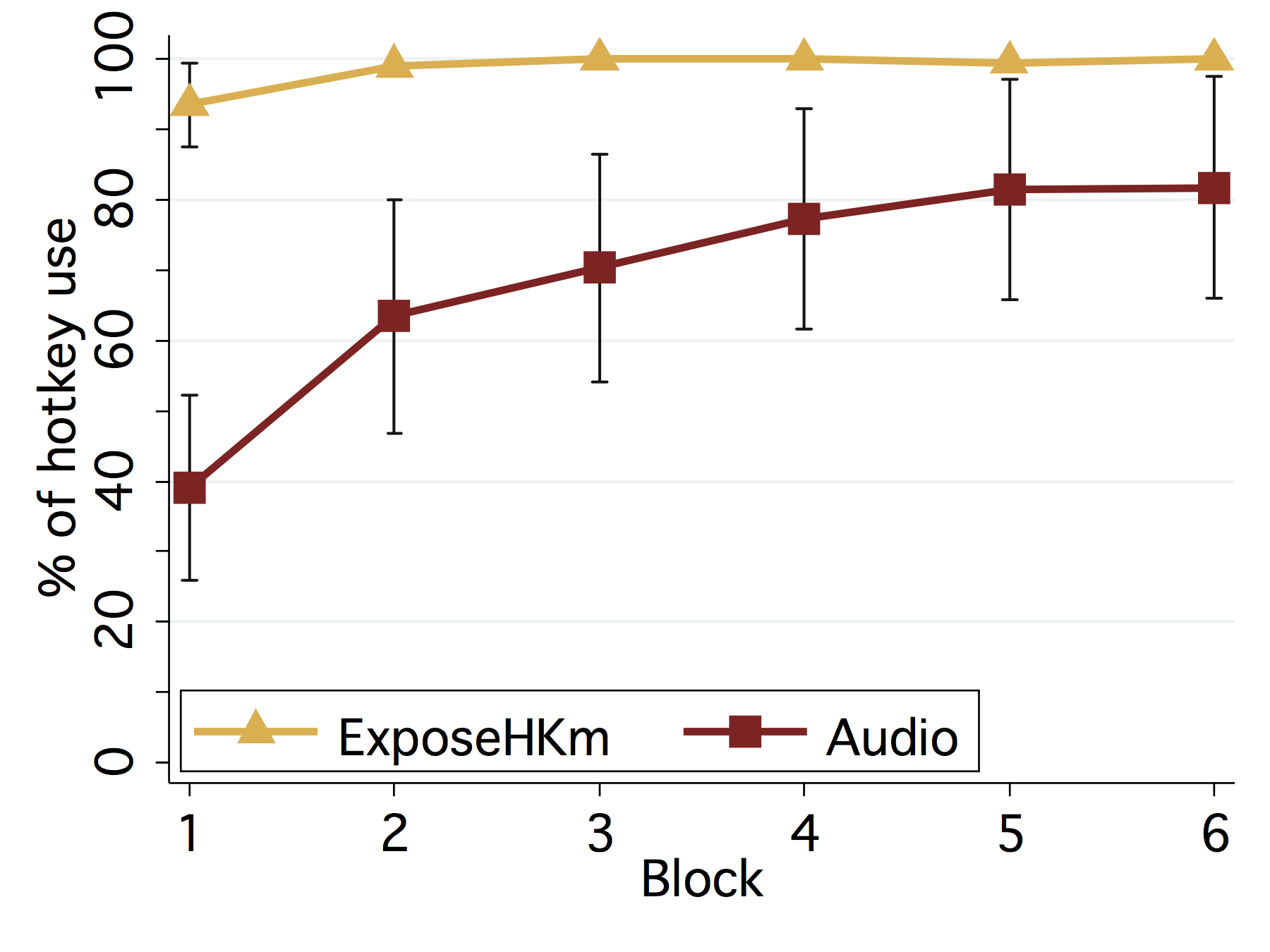 |
| Study 2 (Menus): % hotkey use by frequency | 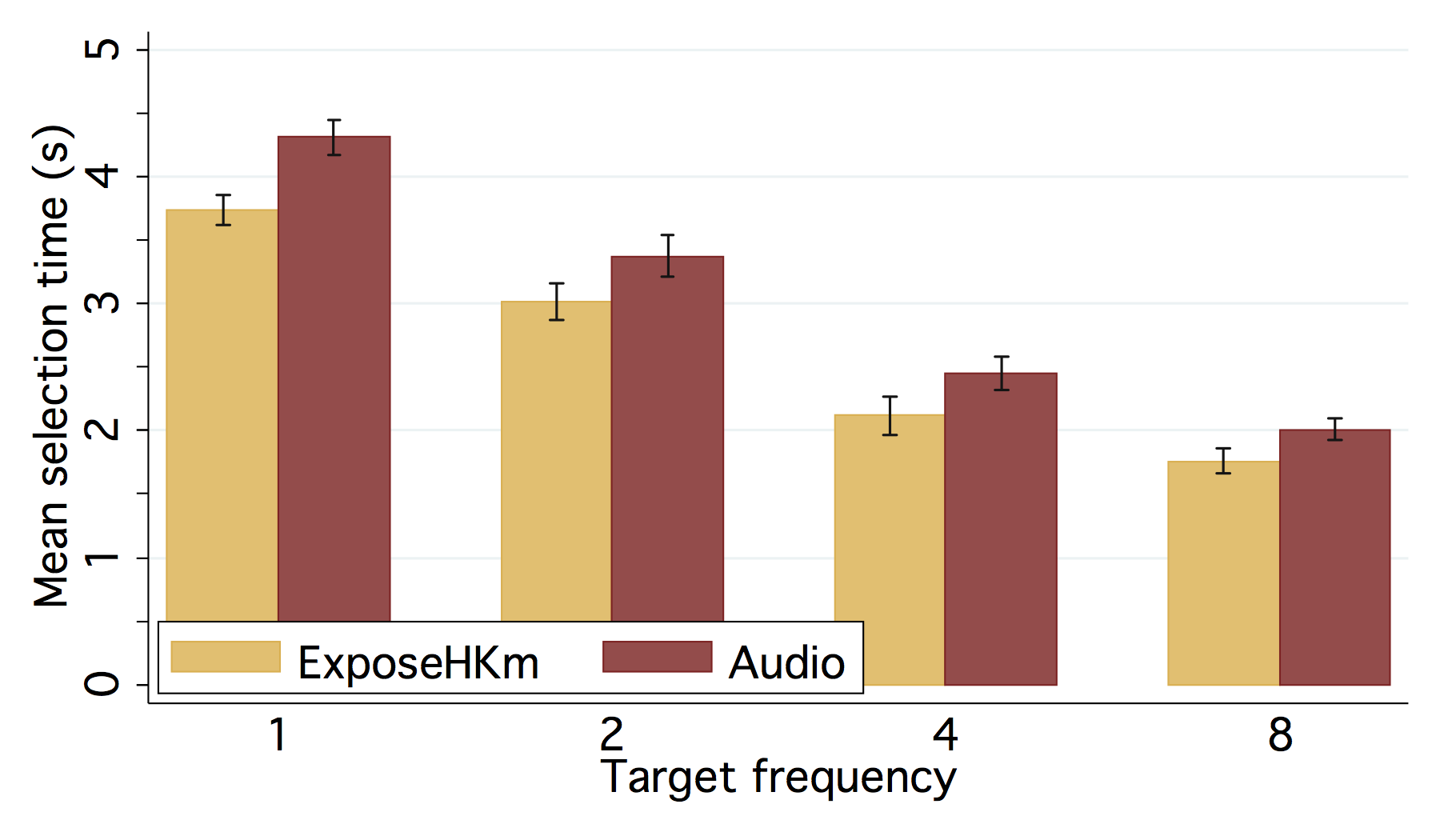 |
| Study 2 (Menus): mean time by block. | 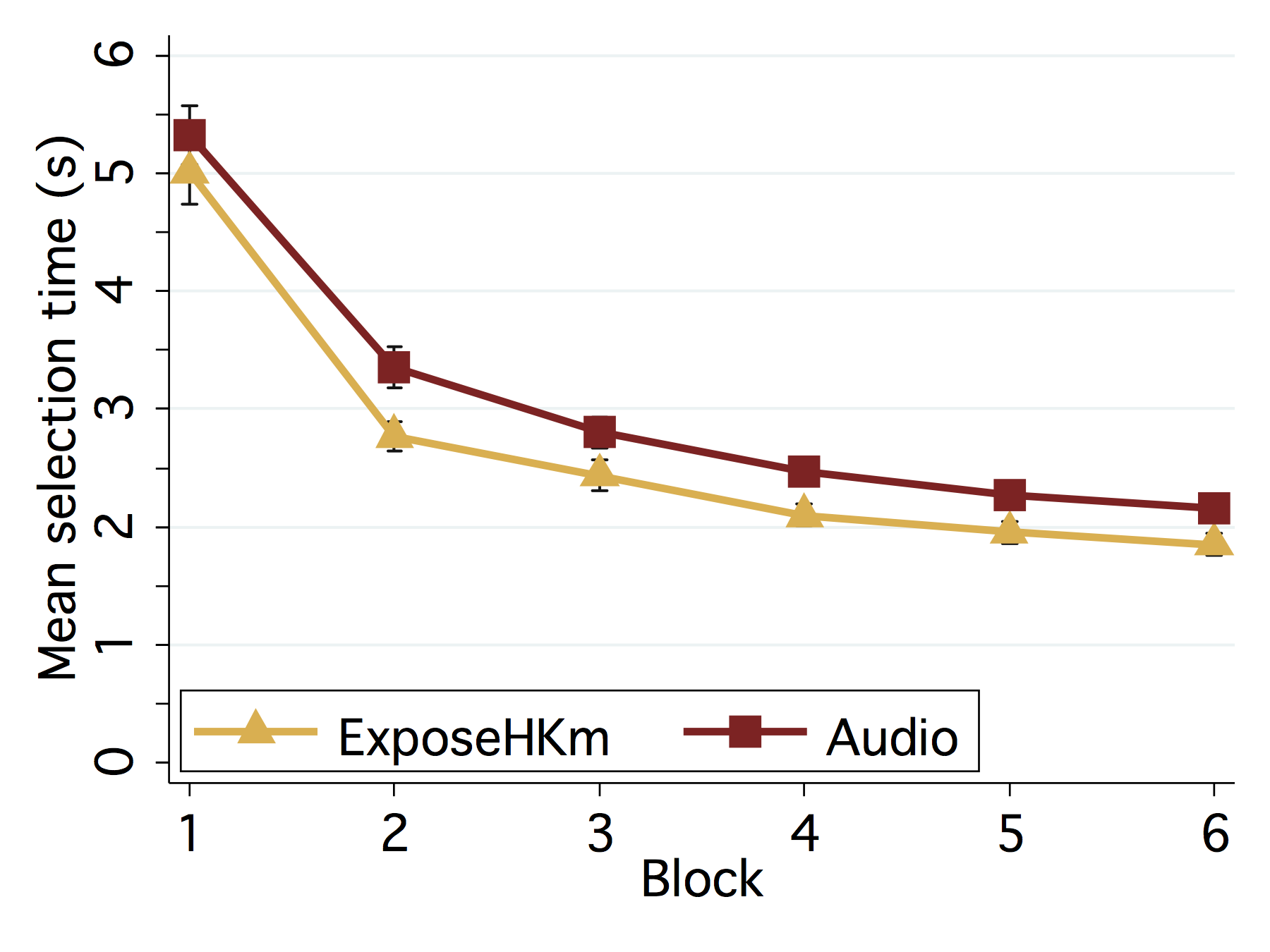 |
| Mean selection time (s) per block (left) and condition (right). |  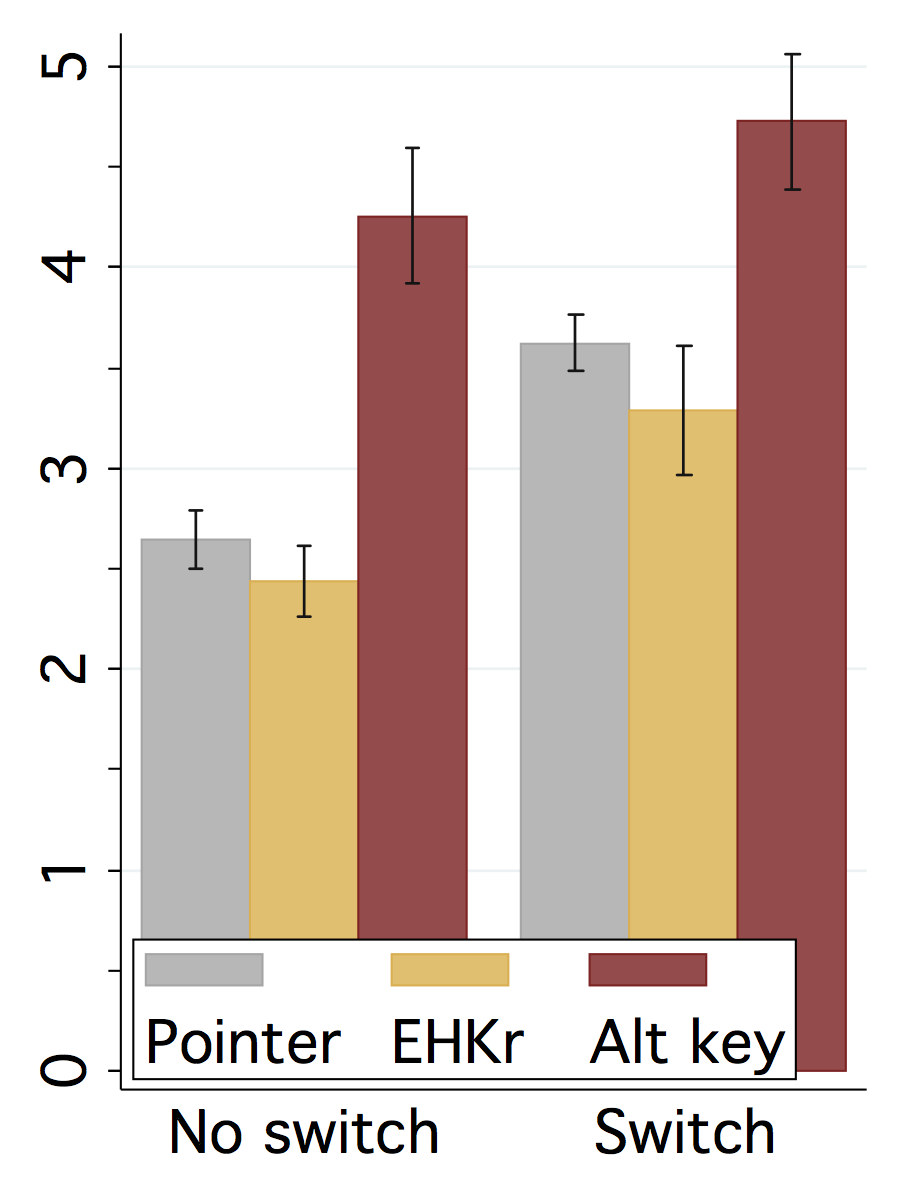 |
References
 |
Gilles Bailly, Thomas Pietrzak, Jonathan Deber, Daniel Wigdor Métamorphe: Augmenting Hotkey Usage with Actuated Keys ACM CHI'13, 10 pages. To appear |
 |
Sylvain Malacria, Gilles Bailly, Joel Harrison, Andy Cockburn, Carl Gutwin Promoting Hotkey Use through Rehearsal with ExposeHK ACM CHI'13, 10 pages. To appear |
Press
- Science Daily. ExposeHK ‘Computer Program Lets Users Learn Keyboard Shortcuts With Minimal Effort’. http://www.sciencedaily.com/releases/2013/09/130930093728.htm. Sep. 30, 2013.
- Neuer Zürcher Zeitung : http://www.nzz.ch/aktuell/digital/exposehk-lernprogramm-fuer-tastaturkuerzel-1.18159766 Lernprogramm für Tastaturkürzel. Oct. 1 2013
- The times of India. How to type like an expert using keyboard?. http://articles.timesofindia.indiatimes.com/2013-10-07/computing/42793249_1_keyboard-user-hotkeys -- Oct. 7 2013
- Christian Kahle. WinFuture. ExposeHK soll User zur Shortcut-Nutzung bewegen. http://winfuture.de/news,78090.html. Sep. 30, 2013.
- Jeoren Beckers. http://capsel1314.wordpress.com/2013/10/21/promoting-hotkey-use-through-rehearsal-with-exposehk/. Oct 21, 2013
- Lernprogramm für Tastaturkürzel, Wiler Zeitung, http://www.wilerzeitung.ch/aktuell/digital/Lernprogramm-fuer-Tastaturkuerzel;art119505,3555651 1/10/13.
- Golem.de : http://www.golem.de/news/softwareergonomie-hilfe-fuer-tastenkuerzel-muffel-1310-101882.html 1/10/13 Hilfe für Tastenkürzel-Muffel by Andreas Donath.
- Tendencias 21 : http://www.tendencias21.net/Atajos-en-el-teclado-un-software-indica-el-camino_a25075.html 8/10/13 Atajos en el teclado: un software indica el camino by Patricia Pérez
- Phys.org : http://phys.org/news/2013-09-users-keyboard-shortcuts-minimal-effort.html 30/09/13 'Computer program lets users learn keyboard shortcuts with minimal effort'.
- Capita Selecta : http://capsel1314.wordpress.com/2013/10/21/promoting-hotkey-use-through-rehearsal-with-exposehk/ 21/10/13 'Promoting Hotkey Use through Rehearsal with ExposeHK' by Jeroen Beckers
Related Projects
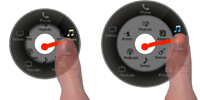 Wave & Wavelet menus |
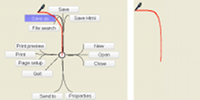 Flower menus |
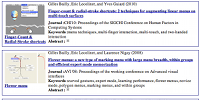 MenUA (design space) |